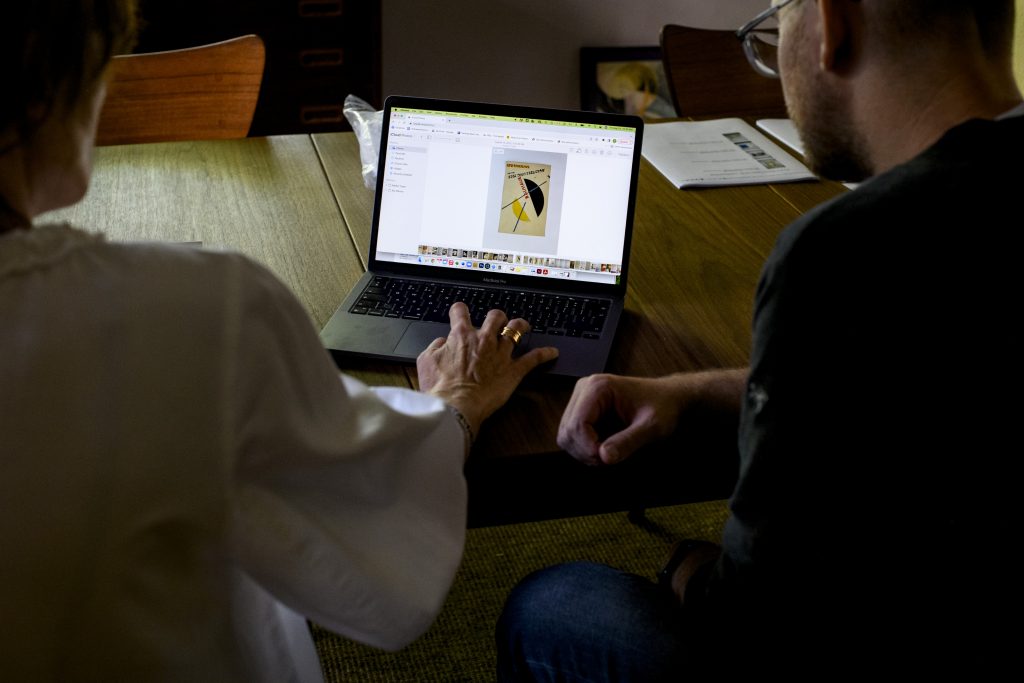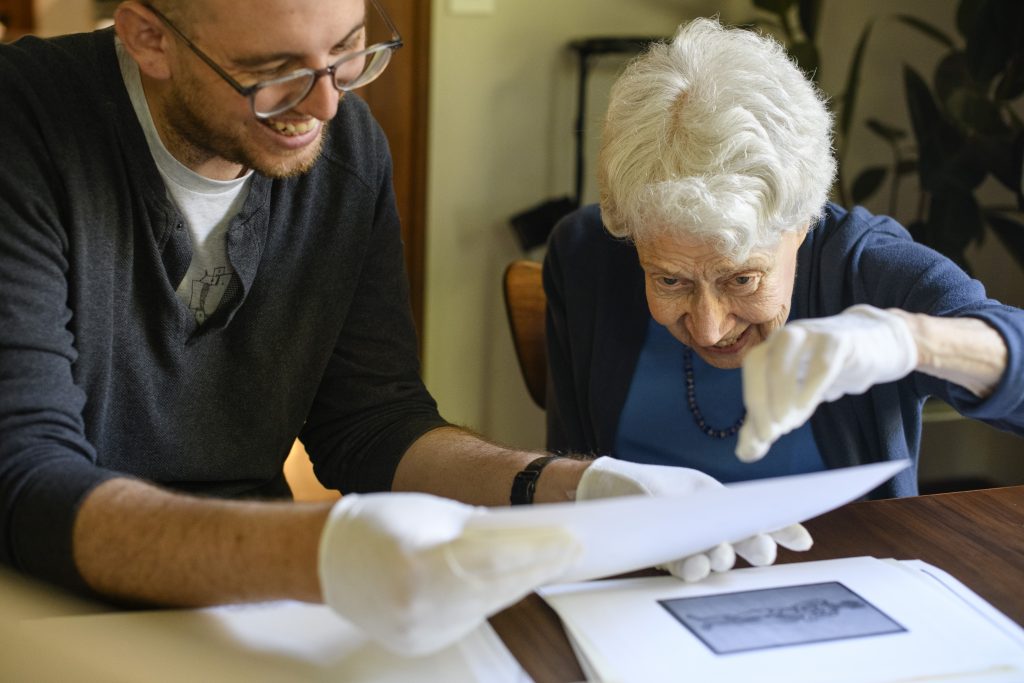NFT artist Dmitri Cherniak takes creative cues from the archives of László Moholy-Nagy for his new generative art series
For his latest series, Light yearsalgorithm artist Dmitri Cherniak brings a pair of fresh eyes to the life and legacy of László Moholy-Nagy. His goal? To shed light on the connections between generative art and the work of Hungarian artist, technologist and Bauhaus instructor.
A polymath, Moholy-Nagy was one of the earliest artists to integrate technology into his art, using tools such as the telescope, the microscope and the photogram to produce his sculptures, photographs and films. A century later, his innovations in combining art and technology are still exciting, informative exhibitions such as the Guggenheim’s “Moholy-Nagy: Future Present” in 2016, while acting as a guiding light for digital creators – not least Cherniak.

Dmitri Cherniak explores the archives of László Moholy-Nagy. Photo courtesy of the artist.
“Generative art is very much in line with 20th-century art history,” Cherniak told Artnet News, referring to the autonomous systems-based approach to making art that includes elements of chance and recursion.
To Light years, Cherniak sought to better understand how Moholy-Nagy viewed “automation as a creative endeavor.” With the support of the artist’s estate, he spent time exploring hundreds of items in Moholy-Nagy’s family archives in Michigan and talking with Moholy-Nagy’s 87-year-old daughter Hattula.
Cherniak sifted through photographs, sketches, paintings, press clippings and documents, all of which provided him a broader perspective of Moholy-Nagy’s life and work – an understanding that informs the custom code that drives the collaborative project.

Dmitri Cherniak with the daughter of László Moholy-Nagy. Photo courtesy of the artist.
Commissioned by the photography collective Fellowship, Light years will be released as a series of 100 generative NFTs. The project will debut as a physical exhibition at Paris Photo from 10-13. November, with an online auction of the works scheduled for December 1. The launch will be preceded by the release of a documentary, which tells about Cherniak’s process and partnership with the estate of Moholy-Nagy.
Cherniak himself continues to dominate the field of generative art, most notably with his signature “Ringers” series of algorithmically generated geometric artworks. last October, Caller #109 sold for $7.1 million and remains the most expensive sale of Art Blocks’ infamous Curated collection. This profile has been important as the medium gains wider traction.
“Cherniak’s creativity, his innovative methodology and strength in explaining the relevance and importance of his method was a huge learning curve for [Moholy-Nagy] Foundation,” the artist’s estate noted in a statement, “and resonates with Moholy-Nagy’s belief in the role of technology in art.”
Follow Artnet News on Facebook:
Do you want to be at the forefront of the art world? Subscribe to our newsletter to get the latest news, eye-opening interviews and sharp critiques that drive the conversation forward.


